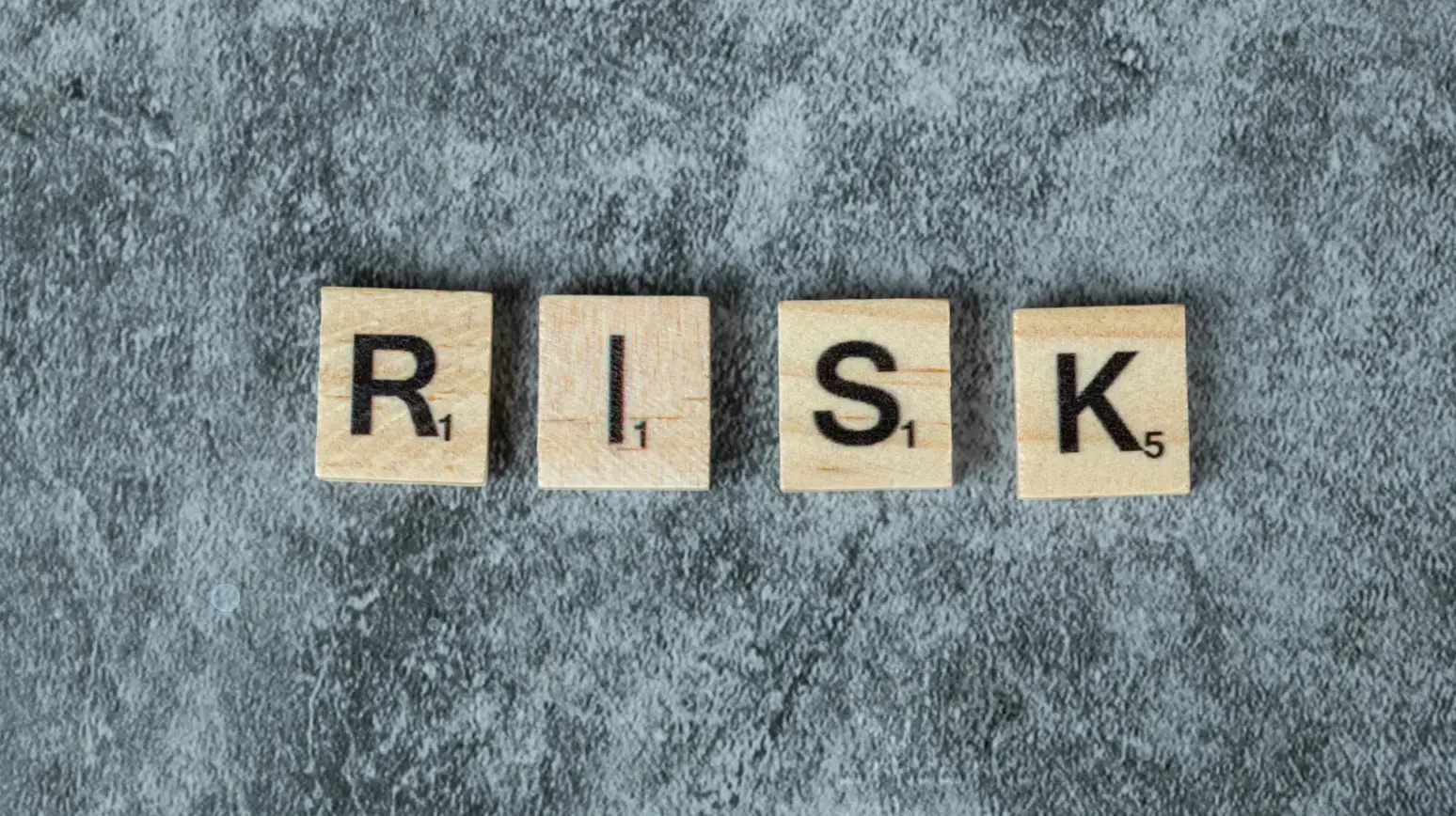You might see your social media presence as a mere marketing tool, but it's also a vital part of your brand identity. And with great visibility comes great responsibility.
As a small business owner or solopreneur, you're juggling countless tasks. Managing social media risks might seem like one more thing on your endless to-do list. However, one misstep online can cause serious reputational damage to your business.
Don't worry, though. We've got your back. In this post, we'll walk you through eight practical strategies to enhance your social media risk management strategy.
Let's dive into the basics of a risk management plan to help you thrive on social media channels—safely and confidently.
In this article:
- Strategy #1: Understand Your Social Media Landscape
- Strategy #2: Create a Comprehensive Social Media Policy
- Strategy #3: Implement Strong Password and Access Controls
- Strategy #4: Train Your Team on Best Practices
- Strategy #5: Monitor Your Social Media Presence
- Strategy #6: Plan for Crisis Management
- Strategy #7: Leverage Social Media Management Tools
- Strategy #8: Stay Informed on Platform Updates and Regulations

Source: Freepik
Strategy #1: Understand Your Social Media Landscape
Before you can manage potential risks, you need to know what you're dealing with. So, let's start by understanding social media risk assessments.
First, take stock of your current social media presence. Which social media sites are you active on? Instagram, Facebook, TikTok, LinkedIn? Each platform comes with its own set of risks and rewards.

Free to use image sourced from Pexels
Think about how you use these platforms. Are you showcasing products, sharing industry insights, or building a community? Your content strategy plays a big role in your risk profile.
Now, consider your audience. Who are they? What kind of social media content do they expect from you?
Understanding your followers helps you anticipate potential issues and tailor your risk management approach. This is where implementing a voice-of-the-customer strategy can be invaluable, helping you gain deeper insights into your audience's needs and expectations.
And don't forget about your competitors. What are they doing on social media? Their successes—and missteps—can offer valuable lessons.
Here's a quick exercise: Spend 15 minutes scrolling through your feeds. What patterns do you notice? Any potential red flags?
Stay curious and keep learning.
Strategy #2: Create a Comprehensive Social Media Policy
A solid social media policy is your first line of defense against online risks. But what exactly should this policy cover? Let's break it down:
- Content guidelines: What's okay to post, and what's off-limits? Be clear about your brand voice and values.
- Handling customer interactions: How quickly should you respond to comments or messages? What's the protocol for dealing with negative feedback?
- Crisis management: Who speaks for your brand if things go south? Have a plan in place before you need it.
- Privacy and data protection: How do you safeguard customer information shared on social platforms?
- Legal considerations: Address copyright issues, disclosure of sponsored content, and platform-specific rules.
Now, you might be thinking, "I'm a one-person show. Do I really need all this?" The answer is yes!
Even if you're flying solo, a policy keeps your social media activities consistent and professional. It's your safety net when you're not sure how to handle a tricky situation.
Strategy #3: Implement Strong Password and Access Controls

Free to use image sourced from Pexels
Let's talk about passwords and access controls. They might not be glamorous, but they're your first line of defense against hackers, security breaches, and unauthorized access.
First up, passwords. Ditch the easy-to-guess combinations. Your pet's name followed by "123"? That's an open invitation to trouble.
Instead, opt for long, unique passphrases for each platform. Can't remember them all? A reputable password manager or password management tools can do the heavy lifting for you.
And what about access? Who has the keys to your social media accounts?
Use role-based access control if you're working with a team or virtual assistants. Only give people the level of access they absolutely need.
Don’t forget: Set up a system to revoke access quickly when someone leaves your team. You'd be surprised how often this gets overlooked.
Your social media accounts are valuable business assets. Protect them like you would your inventory or client list. This approach aligns with the MEDDIC sales methodology, which emphasizes identifying and protecting key business assets and processes.
Sure, taking these steps might feel like extra work now, but they're a small price for peace of mind and brand protection.
Strategy #4: Train Your Team on Best Practices

Free to use image sourced from Pexels
Your team can be your biggest asset or your greatest liability on social media. The difference? Training.
Even if you're a solopreneur, this applies to you. After all, you're wearing all the hats, right?
Start with the basics. Ensure everyone understands your social media policy inside and out.
Next, focus on platform-specific training. Each social network has its quirks and best practices. What works on Instagram might fall flat on LinkedIn.
Don't forget about crisis management. Run through potential scenarios. How would you handle a negative comment spiral? A product mishap? Practice is key.
Here's a key point: emphasize the power of pause. Teach your team (or remind yourself) to think twice before posting. That extra moment can save you from a world of trouble.
Strategy #5: Monitor Your Social Media Presence
Keeping tabs on your social media presence means staying ahead of potential issues—not just tracking likes and shares.
Set up alerts for your brand name and key products. Tools like Google Alerts or Mention can act as your digital early warning system.
Don't just monitor your accounts. Keep an eye on industry hashtags and competitor activity too.
"You'll catch brewing issues and engagement opportunities alike," shares Jeff Romero, CEO of Octiv Digital.

Free to use image sourced from Pexels
Pro tip: Pay attention to the sentiment behind the numbers. A spike in engagement isn't always positive. Is that post going viral for the right reasons?
Monitoring also fuels customer insights and content ideas. Think of it as part of your integrated business planning process.
Once you catch a potential issue, don't panic. Your social media policy should guide your response.
Strategy #6: Plan for Crisis Management
Hope for the best, but plan for the worst. That's the essence of crisis management on social media.
- Identify potential crisis scenarios.
- Draft response templates.
- Designate a crisis team.
- Prioritize accuracy over speed.
- Be transparent.
- Practice your crisis plan.
"Effective crisis management on social media begins with preparation—identify risks, create response plans, and practice regularly to ensure swift, accurate action when it counts," shares Alex Taylor, Head of Marketing at CrownTV.
Strategy #7: Leverage Social Media Management Tools
Social media management tools aren't just for scheduling posts—they're essential for risk management.
Look for tools with:
- Centralized dashboards
- Scheduled posting
- Team collaboration features
- Content approval workflows
- Analytics for engagement and sentiment
Choose a platform that fits your needs, whether it's Hootsuite, Buffer, or Sprout Social.
Strategy #8: Stay Informed on Platform Updates and Regulations

Free to use image sourced from Pexels
Social media platforms and regulations evolve constantly. Staying informed is essential.
Follow platform blogs and help centers. They often announce updates that impact your social media strategy.
Regulations like GDPR or CCPA affect audience engagement. Stay current to avoid legal pitfalls. For instance, if you're implementing a cloud migration strategy, understand how platform changes may affect data handling.
Join professional groups or forums—they're great for keeping up with emerging changes.
FAQs
1. What is risk management in social media?
Social media risk management is your company’s approach to identifying, mitigating, and handling risks on social media platforms. It's about being proactive to reduce risks and handle issues quickly and professionally.
2. What types of risks does a social media risk management strategy cover?
Risks include reputational risks, security breaches, scams, compliance issues, legal risks, and crisis communication challenges.
3. What are the steps in social media risk management?
- Audit your social media accounts
- Create a comprehensive social media policy
- Involve HR, PR, and legal teams
- Assign roles and responsibilities
- Train employees
- Continuously monitor and reassess risks
Conclusion
Managing social media risks doesn't have to be daunting. By implementing these strategies, you're taking control of your online presence.
But make it an ongoing process. Stay vigilant, keep learning, and adapt. With these tools in your arsenal, you're well-equipped to navigate the ever-changing social media landscape confidently.


